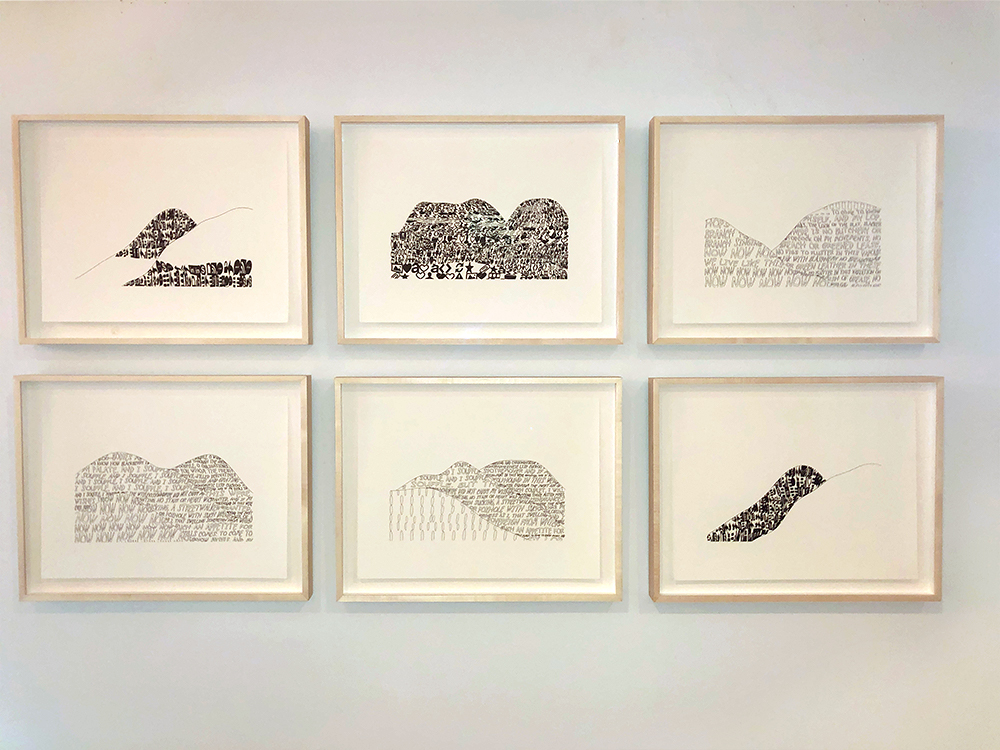
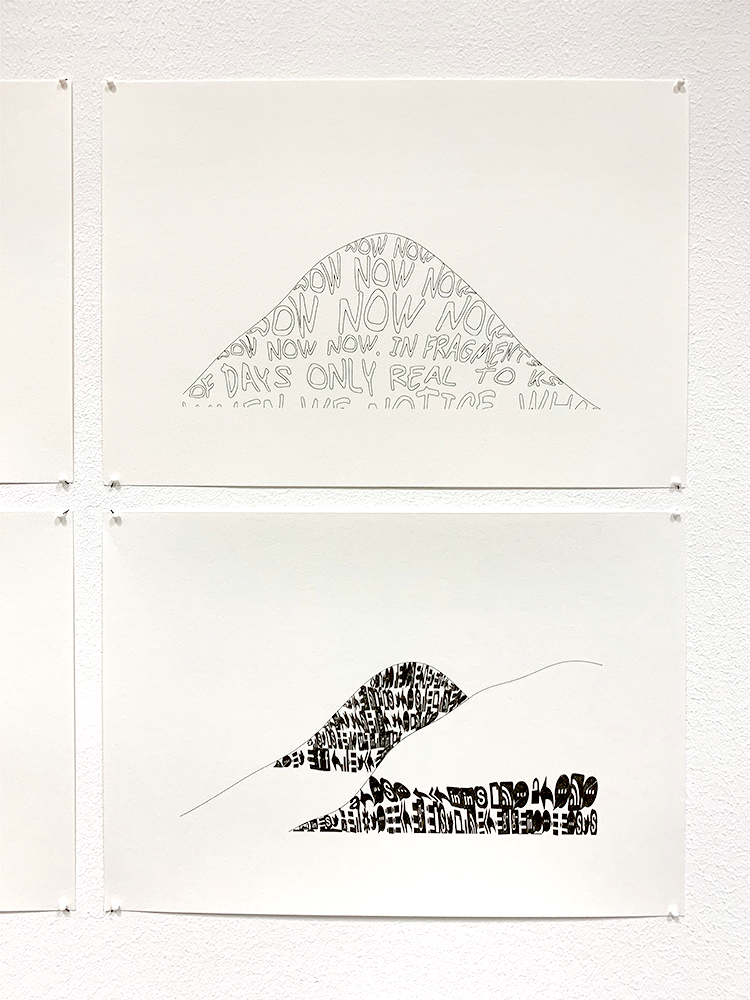
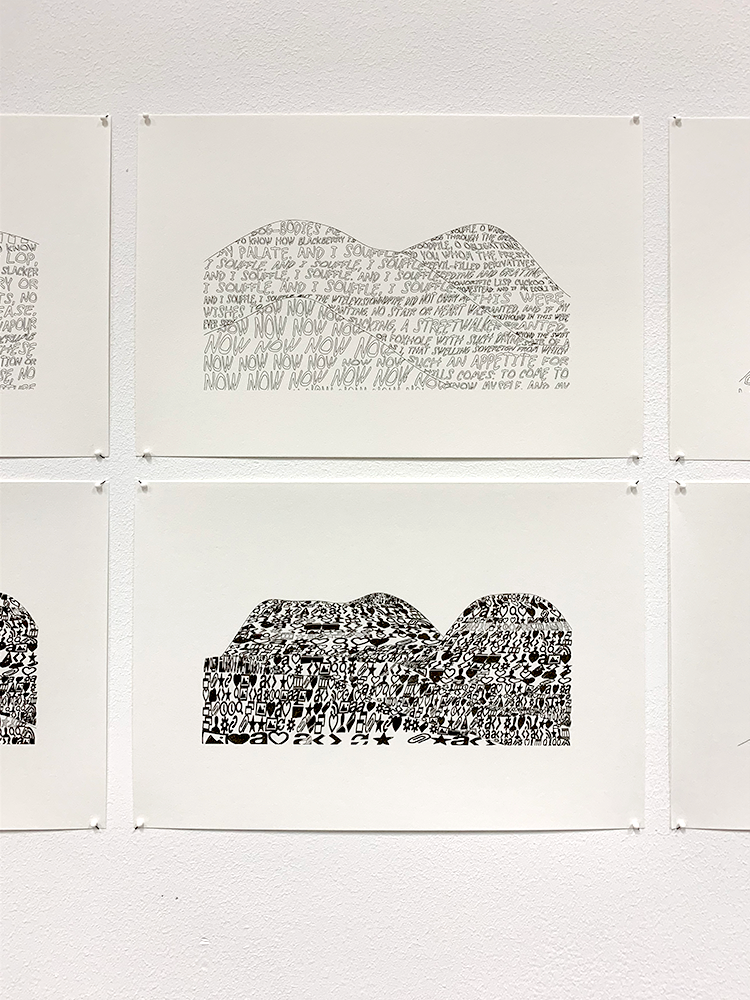
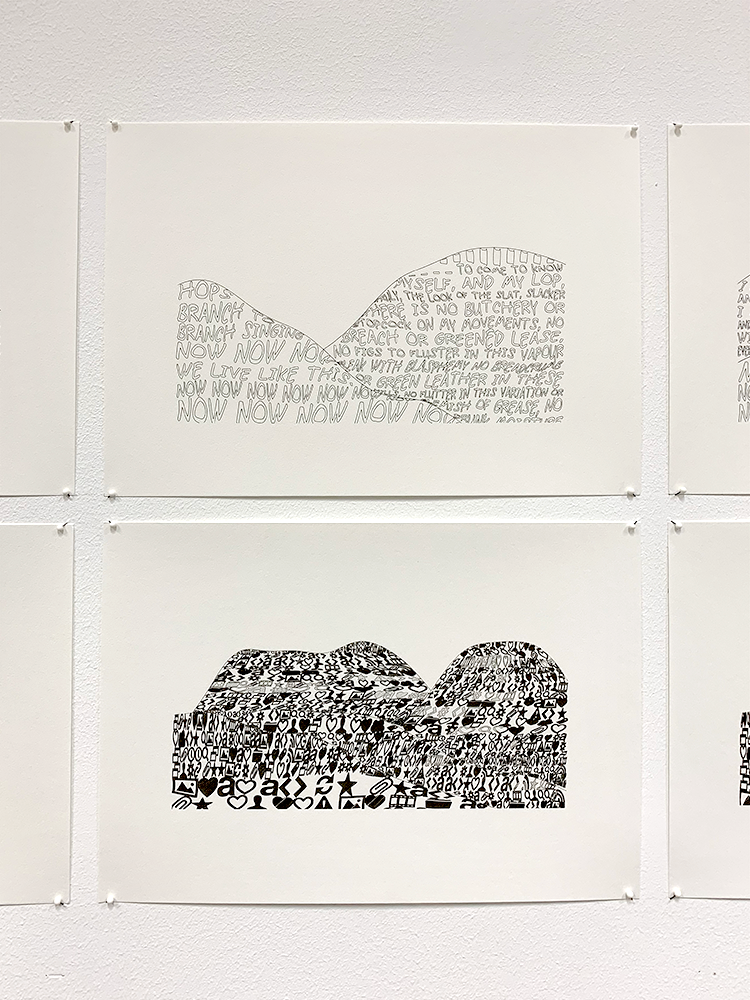
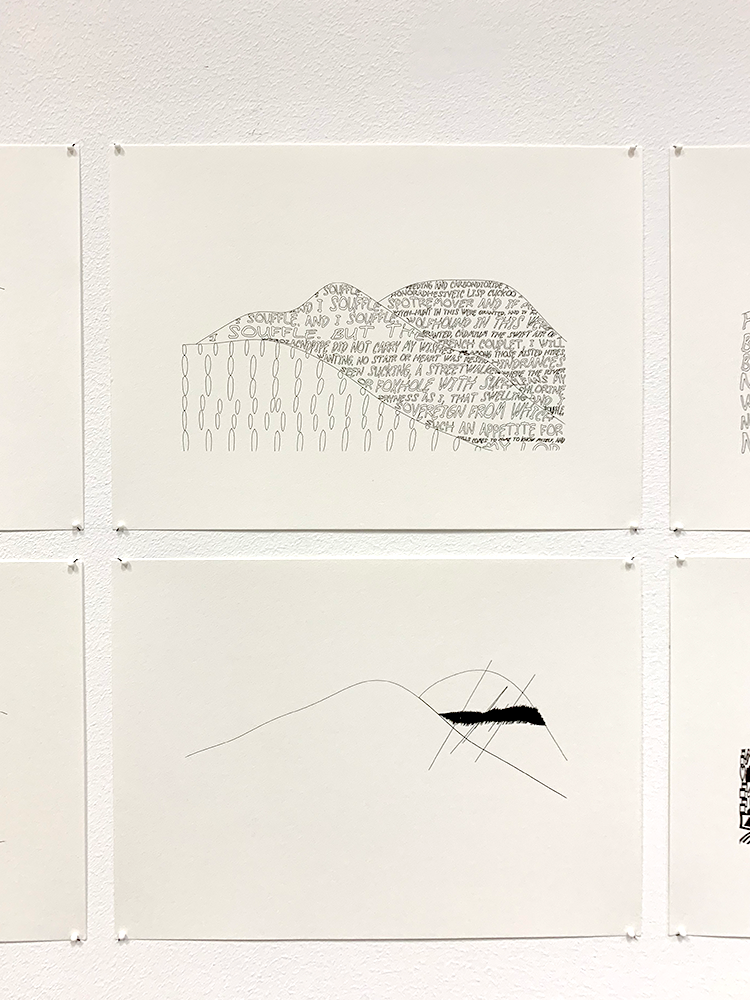
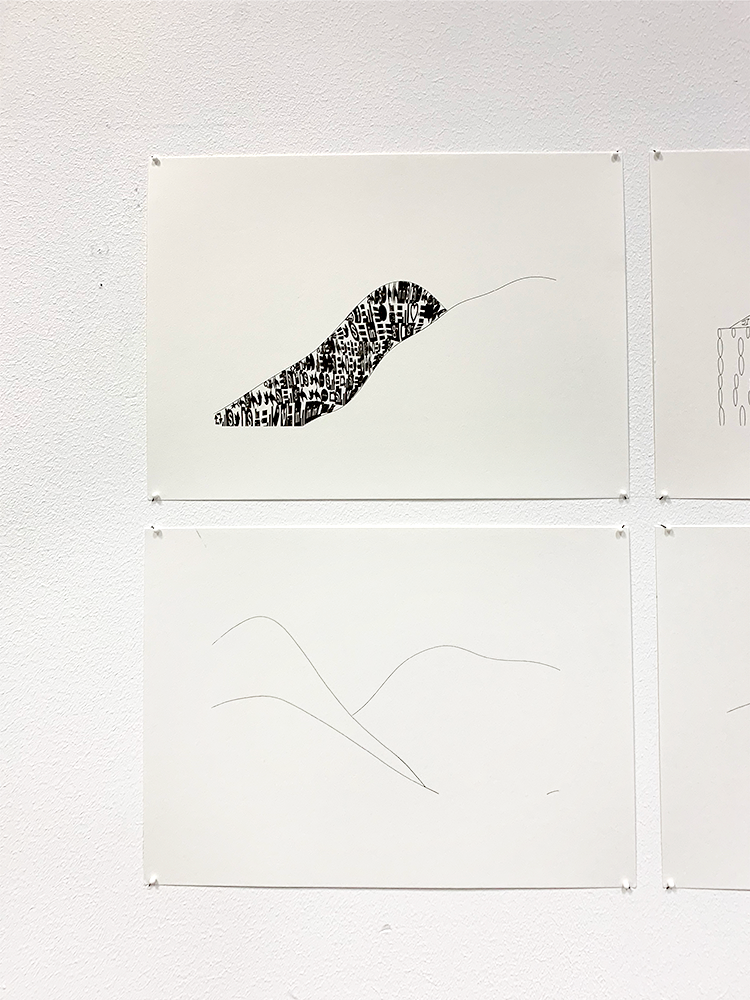
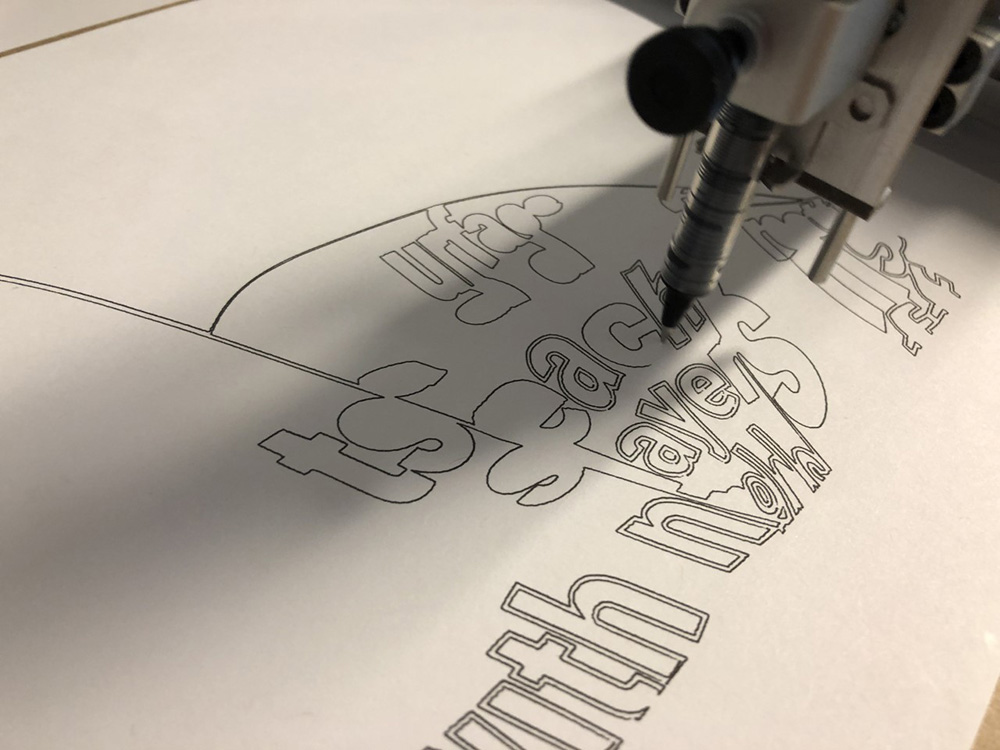

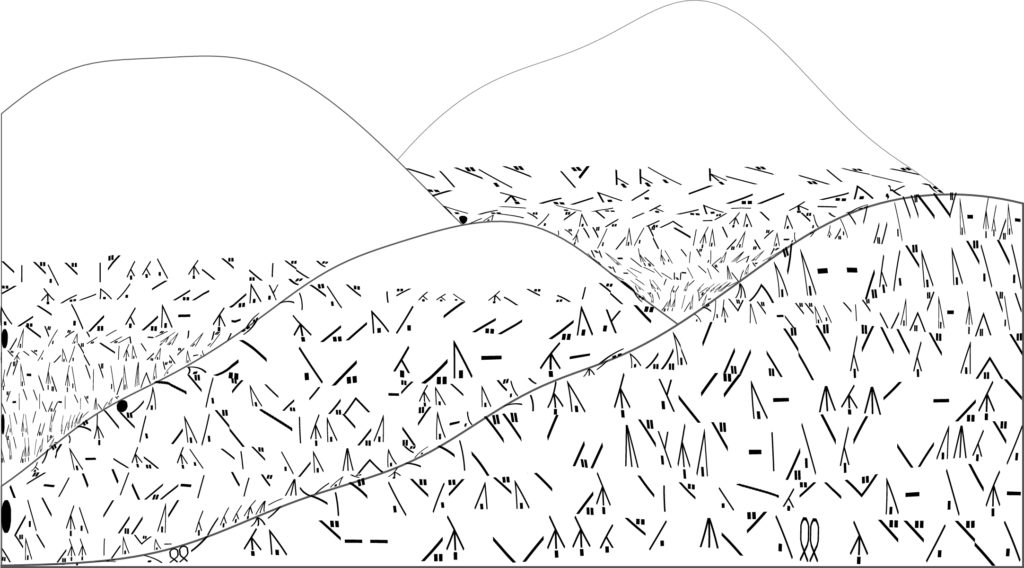
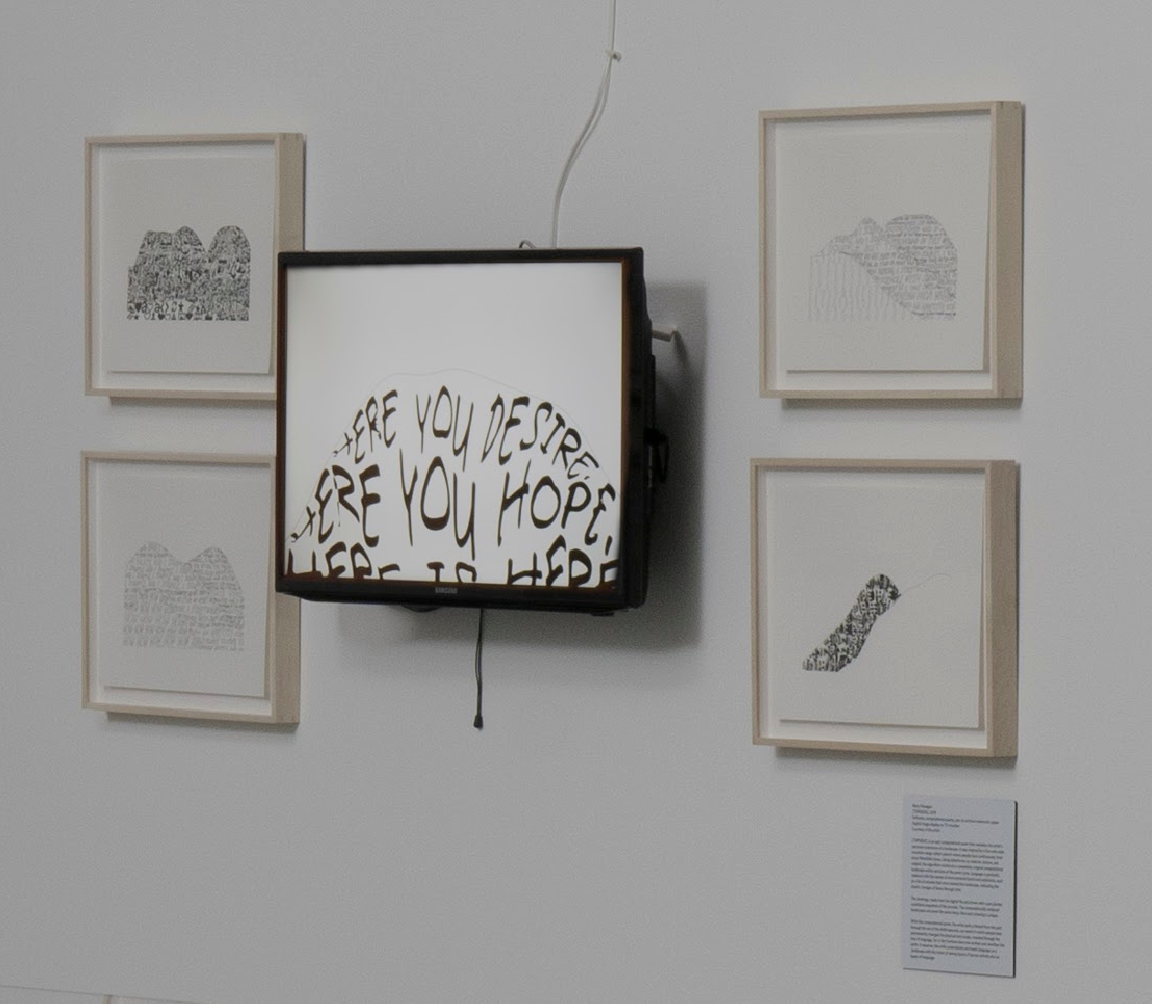
Video
[TOPOESIS]
Software, computational poems, pen on archival watercolor paper
11″ x 15″
27.94cm x 38.1cm
2019
[TOPOESIS] is an epic computational poem. Each chapter of the poem generates a new landscape for the poem to fill. In this work, I use letterforms as material, texture and subject within computationally generated settings. The software generates hill and mountain structures within which the poem cycles. After the poems are completed in one chapter, the software loads another chapter of this digital ‘book.’ Some of the chapters feature my own digitized handwriting in conversation with the pseudo-natural forms, while others consist of commercial logos and other symbolic languages. As the poem restarts after a complete cycle, it begins to replace the words in the poem with pollutants and toxins, implicating the destruction of the landscape in the Anthropocene.
Some of the moments in time are captured and I produce drawings of them with a pen plotter on paper. No two drawings are the same, just like none of the landscapes and text positions are the same.
I’m interested in using letterforms as material, texture and subject. The components of the work– software-generated hillsides and associated texts–cycle in a symbiotic composition process whereby programming and code creates a situation for a literature with special capabilities and surprises.
In the digital age, increasingly human experience to the physical environment is mediated through screens and software. Through language-based maps, mixing topography with language, I want to reflect on that relationship. I want to treat language also as a landscape with the intent of seeing layers of human activity also as layers of language.
The work reflects on the sometimes imperceptible impacts of the Anthropocene, our epoch in which people have permanently changed the earth, revealed through the lens of language, for humans have now written and rewritten the planet. I generate and change the landscapes in code, using mathematics to refer to the process of anthropogenic manipulation of the planet.
The writing for the project integrates my process-based method of language play with conceptual approaches to cartography and generative computational arts that rely on code to evolve and morph, bringing language into a dynamic relationship with representations of stratification, human history, and the very hills around us.
Exhibitions
- Beall Center for Art and Technology, “Computational Poetics,” curated by David Familian and Hannah Higgins, Irvine, CA, October 1, 2022 – January 14, 2023
- Digital Narrative Network “Rewired“, Bergen, Norway, November 2019